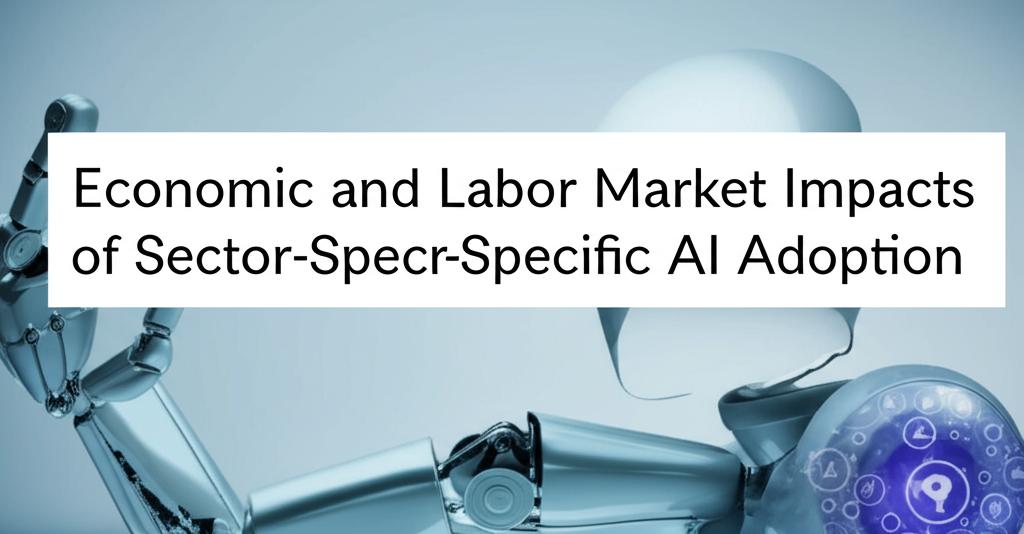Artificial intelligence (AI) is rapidly reshaping industries, but its economic and labor market effects are far from uniform. The way AI is adopted and the consequences it brings vary significantly depending on the specific sector. Understanding these differences is crucial for businesses, workers, and policymakers navigating this technological transformation.
Economic Productivity and Growth Across SectorsAI promises substantial boosts to global GDP, with some estimates suggesting potential increases of up to 14-15% by the early 2030s, translating into trillions of dollars in added economic value. Much of this anticipated growth stems from enhanced productivity.
- High-Impact Sectors: Industries like Information and Communication Technology (ICT), financial services, professional services, and healthcare are often cited as early and significant beneficiaries. AI enhances productivity in these areas through automating complex data analysis, improving decision-making, personalizing services, and accelerating research and development (R&D). For example, in the pharma industry, AI accelerates drug discovery, while in finance, it refines risk management and fraud detection. Software engineering also sees notable productivity jumps (estimated 20-45% potential) through AI-assisted coding and debugging.
- Capital-Intensive Sectors: Manufacturing and transportation are expected to realize major productivity gains, primarily through the automation of routine operational processes and the use of robotics.
- Consumer-Facing Sectors: Retail and consumer goods companies leverage AI for personalization, supply chain optimization, and customer service automation, driving both efficiency and potentially higher consumption.
- Lagging Sectors: Traditional industries like agriculture, construction, food, and textiles currently show lower AI intensity. This may be due to the physical nature of tasks, unique technological needs, or slower adoption rates, rather than a lack of potential.
However, realizing aggregate macroeconomic gains depends heavily on the breadth and speed of adoption across many sectors. Current adoption rates are still relatively low overall (often 5-15% of firms), varying significantly by country, firm size, and industry. Uneven productivity gains across sectors could even limit overall growth due to effects where labor shifts towards less productive sectors (a potential Baumol effect).
Labor Market: A Tale of Displacement, Creation, and TransformationThe impact of AI on jobs is complex, involving displacement of some roles, creation of new ones, and transformation of many existing positions.
- Job Displacement: Roles involving routine cognitive tasks (data processing, basic analysis) and repetitive physical work are most susceptible to automation across sectors. Examples include traditional bank tellers replaced by AI-powered systems, certain data entry roles, and some manufacturing line work. Estimates suggest millions of jobs globally could be displaced in the coming years, with manufacturing and retail often cited as having higher displacement risks (some studies suggest rates as high as 45% and 35% respectively in certain contexts).
- Job Creation: Simultaneously, AI is generating millions of new roles. The World Economic Forum projected a net gain of millions of jobs globally by 2025 due to AI and automation. Demand is surging for AI specialists, data scientists, machine learning engineers, and professionals skilled in AI development and implementation. Sectors like healthcare and education are expected to see significant AI-driven job creation, where AI often augments rather than replaces human roles. Projections suggest substantial growth in AI-related positions in regions like North America, China, the EU, and India.
- Job Transformation: Perhaps the most widespread effect is the evolution of existing jobs. A significant percentage of tasks within many current roles (potentially 30% or more for a majority of jobs) are likely to be automated or augmented by AI. This frees workers from routine tasks to focus on more complex, creative, strategic, and interpersonal activities. For example, financial advisors may use AI for data analysis but focus more on client relationships; lawyers might use AI for document review to dedicate more time to case strategy. This necessitates a shift in required skills towards analytical thinking, creativity, technological literacy, and adaptability.
- Skills Gap and Wages: A major challenge is the growing gap between the skills demanded by an AI-driven economy and the current workforce's capabilities. There is a high demand for AI-related skills, often commanding wage premiums. Conversely, workers in roles susceptible to automation without opportunities for reskilling face risks. This dynamic could potentially exacerbate income inequality if not addressed through widespread upskilling and reskilling initiatives. The demand shifts towards higher-skilled labor, particularly in STEM fields, while potentially reducing demand for lower-skilled labor in certain automatable areas.
- Technology & IT: Leads in AI talent demand and shapes AI innovation. Roles are rapidly evolving, requiring continuous learning.
- Financial Services: Sees automation in routine tasks (tellers, data entry) but growth in roles related to AI-driven analytics, risk management, and cybersecurity.
- Healthcare: AI augments diagnostics and treatment planning, creating demand for roles interpreting AI outputs and managing AI systems, alongside traditional caregiving.
- Manufacturing: Automation displaces routine manual labor but creates demand for skilled workers to operate, maintain, and integrate automated systems and AI platforms.
- Retail & Customer Service: AI automates basic inquiries and optimizes logistics, shifting human roles towards handling complex customer issues, personalization, and managing AI tools like chatbots.
- Professional Services (Consulting, Legal): AI enhances productivity by automating research and analysis, transforming roles towards higher-value strategic advisory and interpretation.
In conclusion, AI's integration is driving significant economic shifts and restructuring labor markets, but the impact profile differs markedly across sectors. While some industries face higher risks of job displacement due to automation of routine tasks, others see substantial job creation and augmentation. Productivity gains are evident at the micro-level, particularly in tech-intensive and service sectors, but translating these into economy-wide growth requires broader adoption. The overarching trend is a transformation of work, demanding a workforce equipped with new skills and adaptability, highlighting the critical need for investment in education and retraining initiatives tailored to the evolving needs of each sector.

